by Elizabeth Johnson, edited by Matthew Crain
Susan Moore Remembered
by Elizabeth Johnson, edited by Matthew Crain
January 2023
Susan Moore Remembered
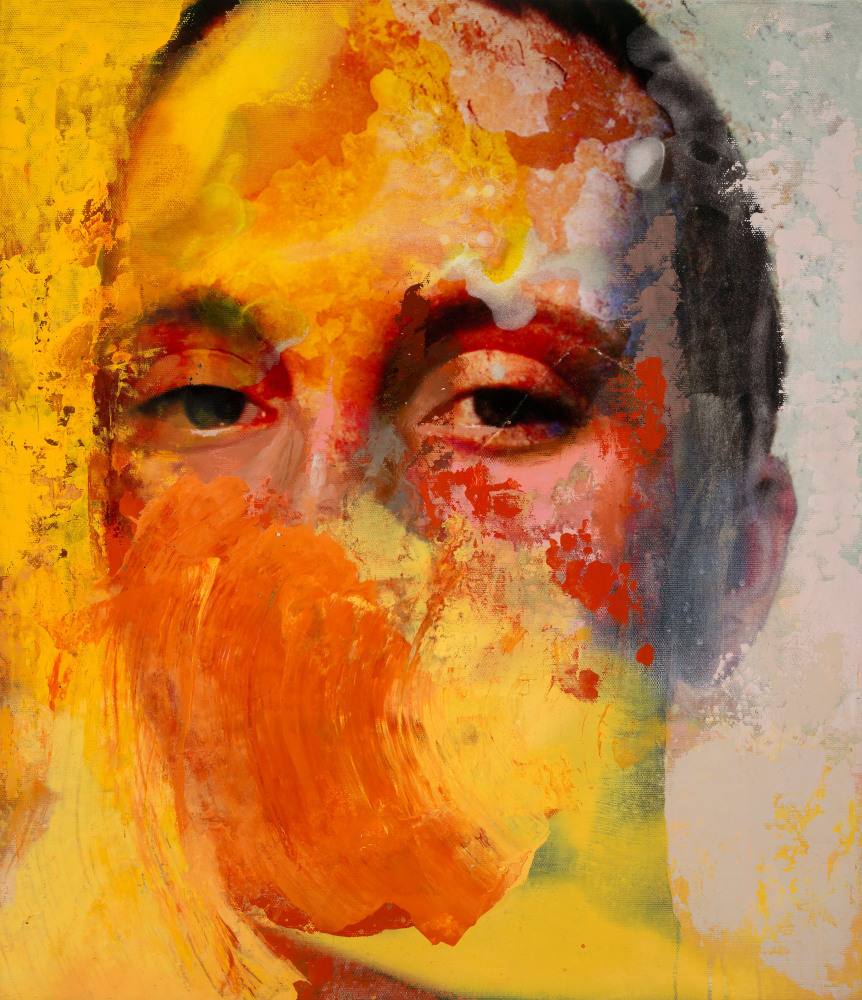
Faccia 16, 19.5" x 17", Mixed Media On Canvas
Ron Abram, Professor of Studio Art & Queer Studies, Denison University in Granville, Ohio, recalls his teacher, colleague, and close friend, Susan Moore:
"Susan was a confident portrait artist with direct goals, an incredibly strong-focused artist, teacher, mother, spouse, sister, and loyal friend to many. She made friends in all walks of life and treated everyone equally. While she did see her work as an expression of herself, she readily emphasized her goal as an artist to be a universal one: to make work that spoke to viewers on an individual level. Susan was a distinct artist: she parted with historical figurative traditions to connect with contemporary abstraction, not striving to illustrate but to provoke the viewer to see and feel core emotions.
Being influenced by the layers of history, and by teaching and working in Rome, Italy, texture and deterioration became more pronounced in her work over the years. She admired alfresco and painters such as Piero della Francesca and Fra Angelico. She synthesized and condensed portraits to talk about aging: how time transforms bodies and faces. I think the newer work has an even stronger emphasis on abstraction, and hints at an intuitive and challenging psychology––an interpretation of voice and mind. Her use of encaustics, specifically oil pastels, connects to her love of drawing, observing and interpreting what she saw. She often felt more connected to working with an oil pastel stick than a paint brush, since it was more direct and immediate."
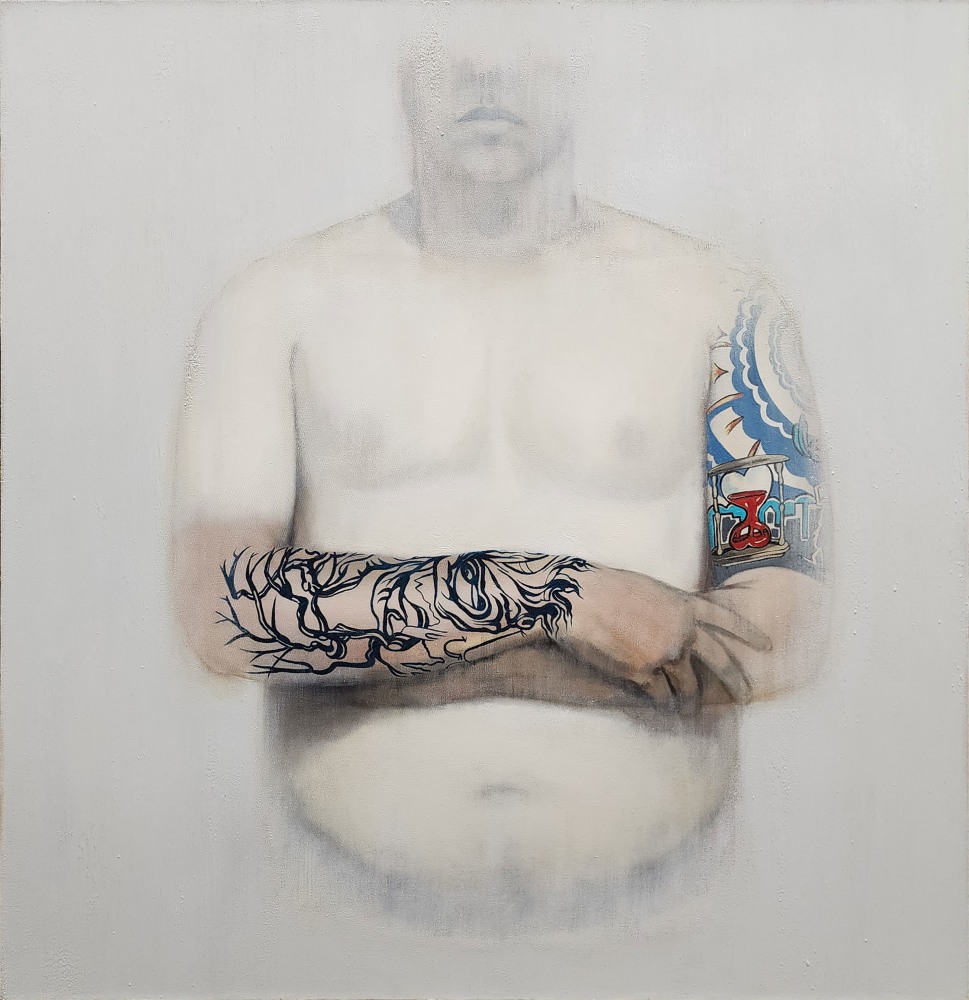
Second Skin: Tree Of Life 114, 48" x 46", Oil On Canvas
“Susan was an avid photographer and admired many other photographers’ works. She grew up documenting personal and family life in many photo albums and digital folders. She took snapshots daily to potentially use in the studio. Many involved photo sessions of models posing in her studio, but she was also spontaneous. I remember Susan saying, 'Oh, the light is great here: let me take a photo––pose this way.' Friends, family, colleagues, and especially students took great pride in being asked to pose for Susan.
Second Skin, a 2007 exhibit at Locks Gallery, gathered portraits of models with tattooed torsos to explore how decorating the body with 'sampled marks––combinations of the tribal, religious, feminist, and memorial––impacts the body and perception of identity.' She was ahead of her time in highlighting stereotypes, body diversity, and fantasies people have about who they are.
Popular culture was a ripe source of inspiration throughout her career. She gathered an array of practical imagery reflecting her own sense of self as well as larger cultural issues: mug shots, passport photos, I.D. photos, before/after depictions, fashion, film stills, media shoots, and other Americana gathered from the immediate here and now of television, internet, magazines, and advertising..."
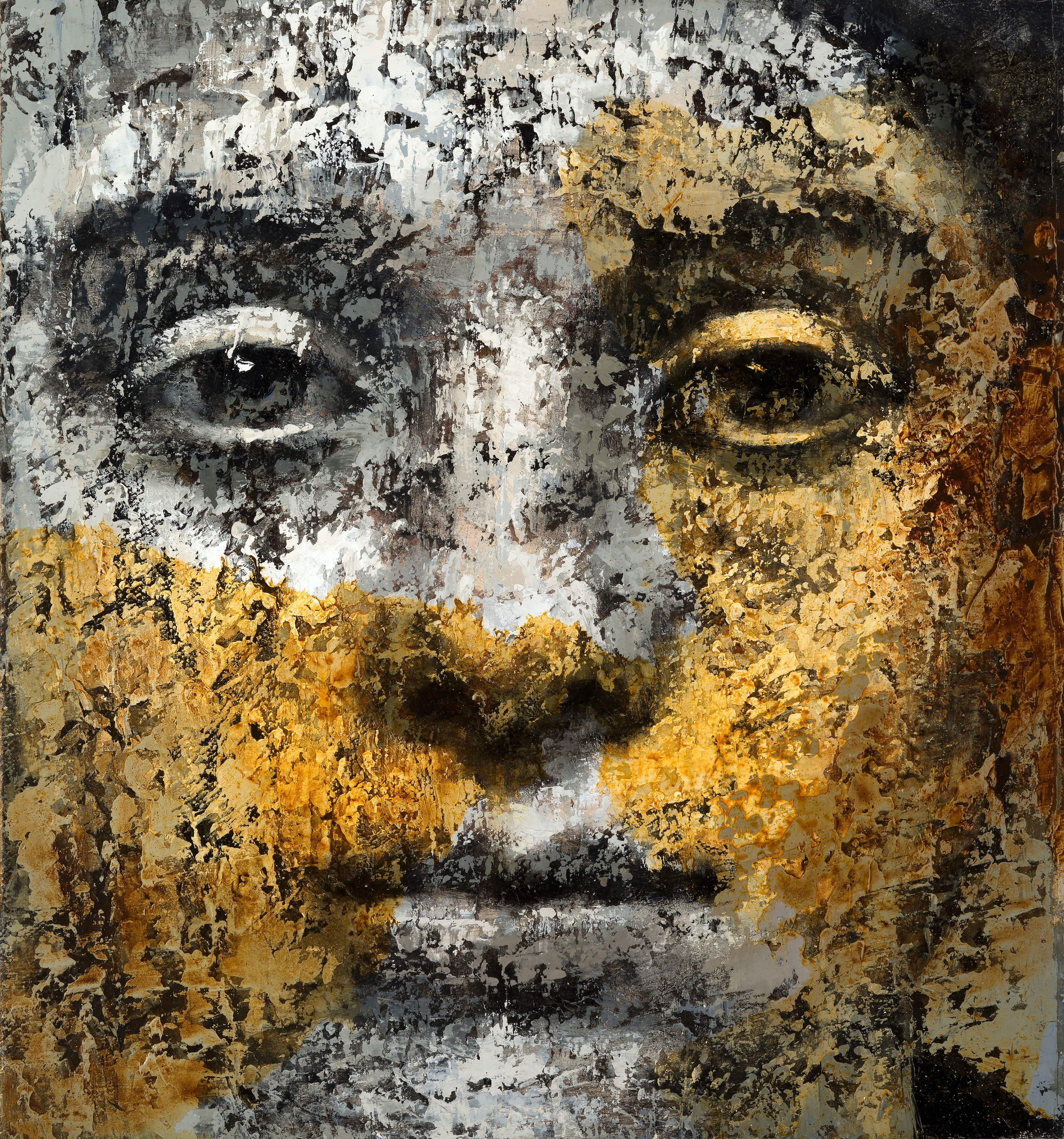
Ritratto 45, 15.25" x 14", Mixed Media On Canvas
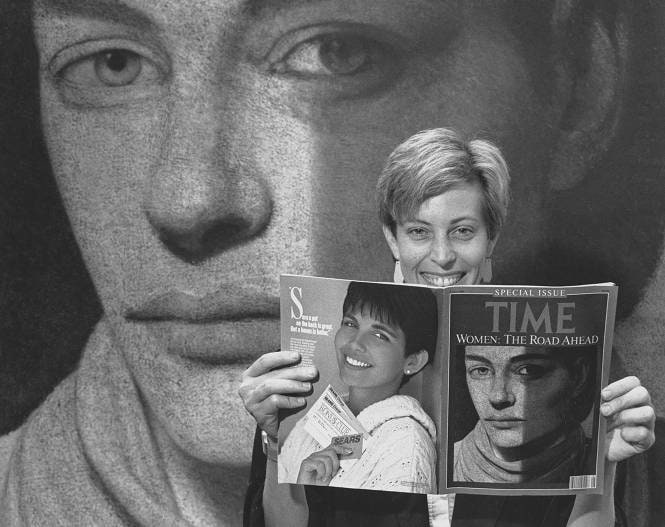
Susan Moore photographed with TIME Magazine's Special Issue, Women: The Road Ahead at Temple University, The Tyler School of Art and Architecture, November 2, 1990
"...Through painting, Susan transformed her visual source materials, recasting them as introspective, spiritual, and poetic. She created fictions, mixing characteristics of multiple sources and sitters, especially in the collage paintings. She sought the psychology underneath the surface, regardless of whether she was portraying a friend, stranger, or glamourous movie still. Capturing color, light, texture, and the intangibles of emotion that connect, these were more important than a specific narrative. She had a great love of ancient Roman Fayum mummy painting, portraits that had to do with imagining who those people were while also celebrating inherent mystery. For me, what is fascinating about Susan’s portraits is how she approached representation and propelled figurative traditions of painting with beauty, ambiguity, and poignancy.
Among her subjects, she emphasized painting women. She was aware of her place in history and contemporary art: that there are not enough paintings of women by women. In 1990 her painting was chosen by TIME magazine for the cover of its fall issue, Women: The Road Ahead, and included in the National Portrait Gallery. By depicting women and the dynamic range of portraits she leaves us with, her career covered the breadth of a woman’s life.”

Faccia 11, 19.75" x 20", Mixed Media On Canvas
Rochelle Toner, Professor Emeritus of The Tyler School of Art & Architecture and Dean Emeritus, recalls her colleague and close friend:
"Susan Moore took her work in the studio and teaching very seriously, and she was proud of her success in both areas. She was one of the most consistently inventive and demanding artists and teachers I know. Even as her illness progressed Susan was working every day and doing some amazing and startling work. The nature of those last pieces was a controlled explosion of form, texture, color, and composition. To me, the drawings were an extremely graphic search for the identity and understanding that had always preoccupied her as an artist. I have no idea what was going on in her mind, but she was 'letting it all hang out.' These last images grew naturally out of other portraits, but they were riveting and complex, and I suspect a reflection of what she was going through.
It seems to me that the gestures, tattoos, clothes, etc., in Susan's work were all aspects of revealing and searching for meaning and identity..."
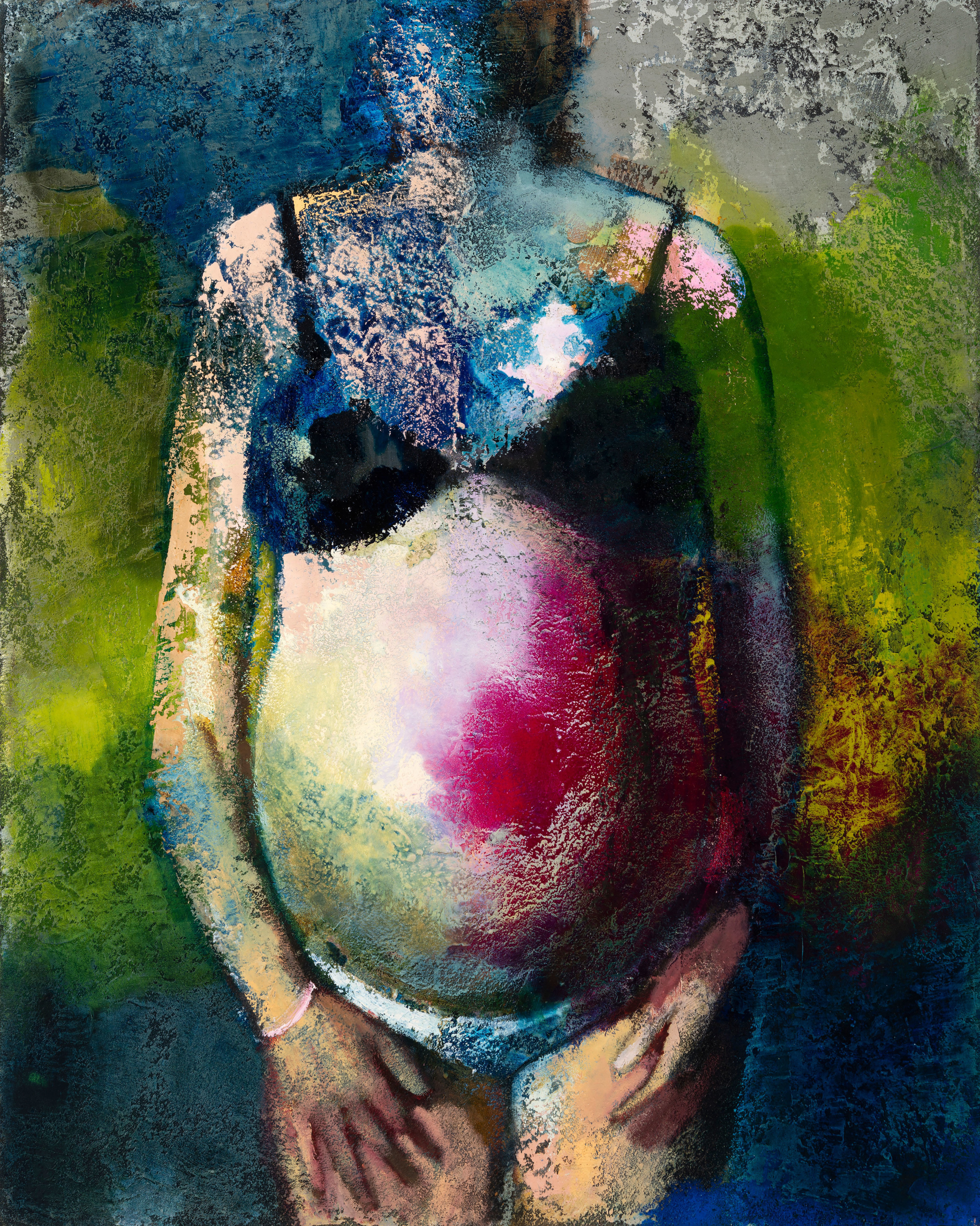
Pregnante 3, 30" x 24", Oil On Canvas
"...Fashion, body type, gender, were all explored as depictions of our collective humanness: on the one hand, the search for what was common to belonging, and on the other to maintaining individuality. To me, these figurative identifiers became like ‘attributes’ in the depiction of saints, simultaneously ascribing belonging and uniqueness. These attributes are tribal even as they are Western.
She took on the roles of artist, teacher, wife, and mother with determination and passion. No one does this perfectly, but Susan did it all with dedication. She was confident, fun, gregarious, and loyal. Most likely she had moments of doubt and fear and confusion––that's the human condition, which I think interested her. Susan was interested in people, the dynamic forces that make us who we are and how we present ourselves to the world."
Thank you, Rochelle Toner and Ron Abram, for sharing tributes to Susan Moore. Responses were edited for continuity.
––Elizabeth Johnson
(elizabethjohnsonart.com)
edited by Matthew Crain
(instagram: sarcastapics)
January 2023
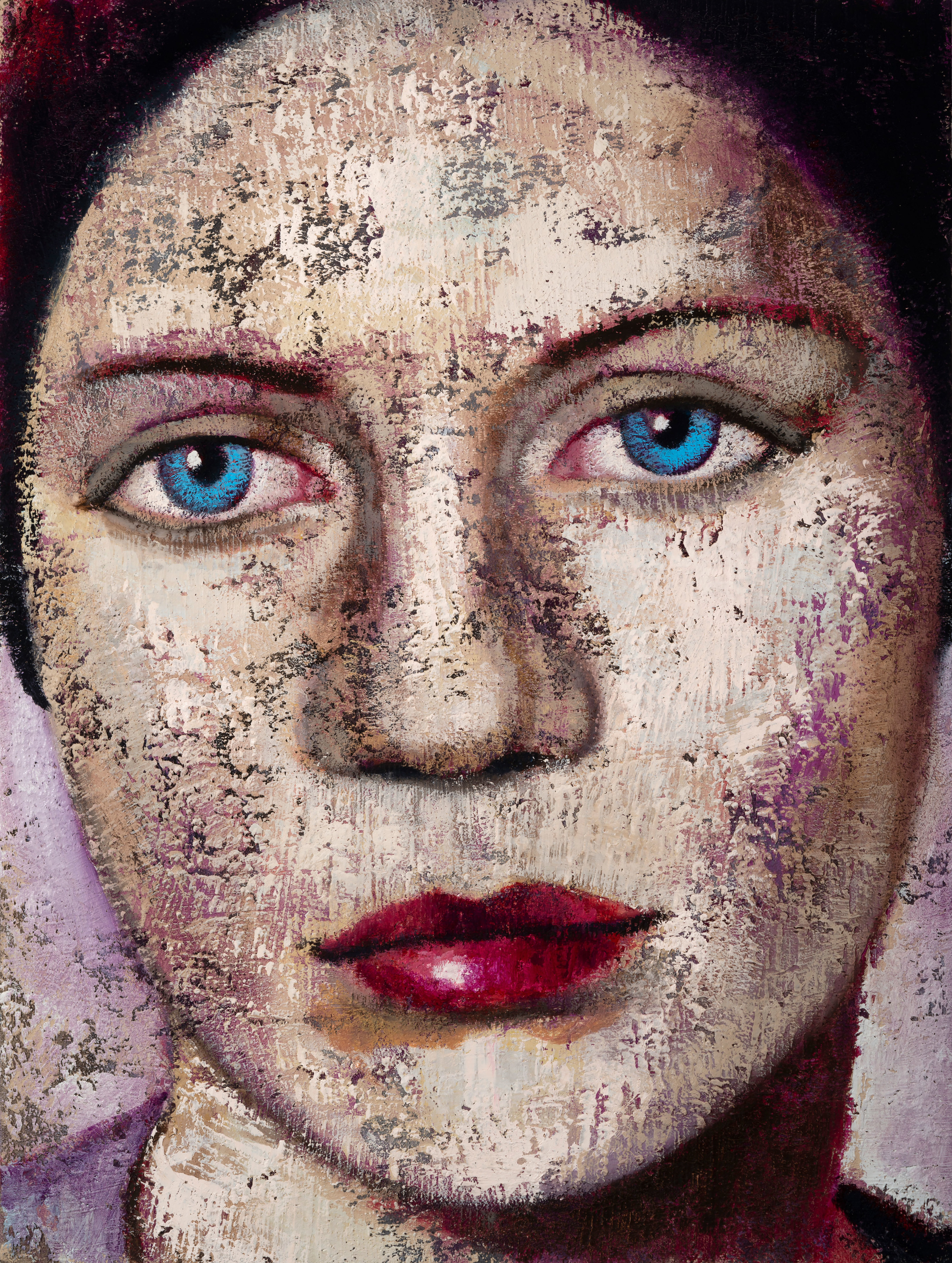
Man Ray's Muse 35, 24" x 18", Oil On Canvas